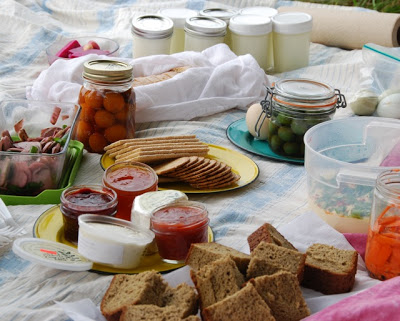
In this post, I want to talk a bit more about the GAPS diet. You might have seen me mention it a few times in other places but I have yet to write a post dedicated solely to the wonder that is GAPS.
So let’s begin with the basics.
What is GAPS?
GAPS stands for Gut and Psychology Syndrome and it’s a temporary(!) recovery diet that is supposed to heal your gut and give it more strength to digest food properly.
I would recommend trying out GAPS to anyone who has digestive issues, either caused by temporary health problems or food allergies and/or sensitivity. I am not claiming that GAPS will heal your allergy but I truly believe it might just be the thing that will get your symptoms under control. GAPS is also helpful to those who generally don’t feel properly nourished, have less energy than usual, or have problems with focusing.
The GAPS diet is different from a regular diet. It’s a diet you follow only until your gut has healed. By temporarily cutting out certain foods, you give your digestive system time to heal so that eventually, it will become able to digest those foods with no issues. It’s a modified version of the Specific Carbohydrate Diet (SCD). The GAPS is not about losing weight but about making YOU feel better overall by focusing on what really matters: the food you put in your body.
The premise of GAPS is that the gut is the most important organ in our body responsible for protecting us from diseases. It keeps the immune system in check and makes sure that it works properly. Without a functioning immune system, we are more susceptible to becoming sick. As such, keeping your gut healthy is what keeps your body healthy. By healing your gut with GAPS, you will improve your whole body’s condition. The duration it takes to heal is different for everyone and depends on how damaged your gut is. Some completely recover in just six months but others need to follow GAPS for three years or even more to fully heal.
How do you know GAPS is good for you?
You don’t. At least not until you try it out. But instead of committing to following GAPS guidelines for a whole year, it is recommended you start with 30 days first. Those 30 days should give you a good idea of whether you can see your condition improving and the GAPS is worth continuing. Once you get through the first 30 days, the rest will be a breeze.
There is an excellent book that explains exactly what to eat during those first 30 days. It’s the “What Can I Eat Now? 30 Days on the GAPS Introduction Diet” and was written by Cara Comini. It has been immensely helpful to me and I highly recommend you check it out! It gives you guidelines for each day of your introduction to GAPS and contains plenty of recipes to try out.
What does the GAPS diet look like?
The GAPS diet is relatively simple. You can eat anything if it’s easy to digest. You will need to know which foods are easy on the stomach and which aren’t but once you have that memorized, following GAPS is easy. There is a list of GAPS-friendly foods you can check out.
I don’t eat grains, even if they are soaked. The only sugar I allow myself is raw honey. Starchy vegetables like potatoes have been shelved for now. I also avoid fresh dairy, even raw milk. But I eat plenty of other foods: eggs, yogurt, vegetables and fruit, meat, coconut flour, and healthy fats like butter and coconut oil. And I don’t feel like I’m missing out. Especially since I know that if I follow the GAPS properly then I will be able to eat all the grains I want without any health problems afterward!
What else do I do during the day?
- Take a detox bath in the evening with an addition of either sea salt, Epsom salt, baking soda, or apple cider vinegar.
- Take a probiotic twice a day.
- Drink fresh veggie juice in the morning to wake me up.
- Drink a cup of bone broth three times a day.
I have just one word of caution for you if you decide to start GAPS: it’s easy to go too low carb, especially at the beginning. You probably won’t be able to see it at the start but being too low carb long term, for a few months, is going to do you more bad than good. You might start feeling lethargic and unable to sleep at night, your energy levels will be low. That’s not because GAPS isn’t working but because you’re restricting your carbs too much.
And I really can’t praise Cara’s GAPS resources enough. Not only has she written an amazing book that serves as a thorough introduction to the GAPS diet, but she also has prepared plenty of GAPS-friendly meal plans. Those are the meal plans that she and her family uses herself to help with her child’s autism. Switching to a GAPS diet can be hard, especially in the beginning, but having tested meal plans at hand really relieves you of some of the planning stress!
If you want to feel better then do give GAPS a try for those first 30 days. Even if you decide it’s not for you, after a full month of an amazing healing diet, your body will surely thank you for it! If you are on GAPS or are just planning to begin your healing journey, leave a comment so that we can all feel like a real community!